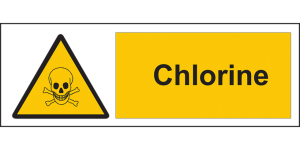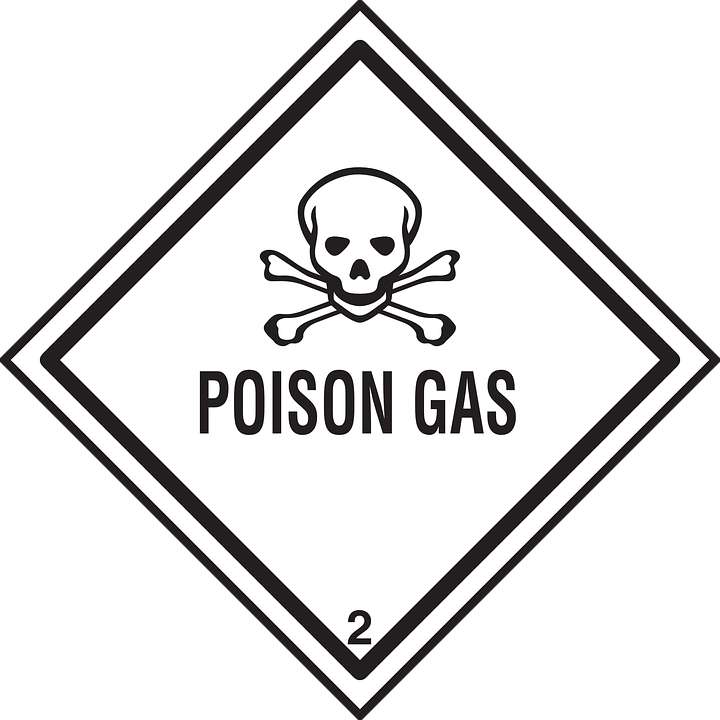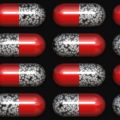
De Faakto Intelligence Research Observatory
CHLORINE as a Chemical Weapon & Psychological Warfare Tool-De Faakto OSINT Analysis
Situation
Chemical Weapon Use of CHLORINE in Syria
Methodology
OSINT-research
Background & Analysis
Chlorine is a chemical agent used for various industrial applications. Documented by the United Nations and international rights groups chlorine has been weaponized and used in Syria by the Assad regime on several occasions. Chlorine gas is weaponized by filling cylinders or barrels with the chemical and dropping them from helicopters, usually at night. The cylinders, known as barrel bombs rupture through mechanical impact when hitting the ground. Chlorine is an effective chemical weapon because it is inexpensive, does not contravene chemical weapons treaties, causes panic and terror, overwhelms medical resources with multiple casualties, and alternatively forces local populations to evacuate strategic areas. Weaponized chlorine gas is lethal in only 1% of victims however, it inflicts significant respiratory, eye and skin injuries, often accompanied by psychological damage.
Why use weaponized chlorine gas?
• Inexpensive
• Readily available industrial chemical
• Easy to manufacture
• Chlorine is not banned by chemical weapons conventions
Why is chlorine gas an effective weapon?
• Chlorine gas attacks are meant to overwhelm medical resources and supplies
• Victims require oxygen, which is often in short supply
• Medical facilities cannot handle volume of patients
• Chlorine is an effective method of driving civilians from opposition held territory, this allows opposing forces to execute military operations (CNN, 2016)
Chlorine as a Psychological Warfare Tool
• Chlorine gas attacks spread panic
• Chlorine dropped at night causes terror-residents leave the next night because they fear another attack
• Chlorine attacks often coincide with successful opposing rebel operations
• Chemical attacks with chlorine may be used as a punishment tool for civilians in rebel held enclaves
• Chlorine attacks cause PTSD in victims, emergency responders & medical personnel
• Residual chlorine persists after the attack making the area temporarily uninhabitable (CNN, 2016)
How is weaponized chlorine gas delivered?
• Chlorine gas is delivered using barrel bombs-cylinders dropped from a helicopter, impact mechanically ruptures cylinders releasing a slow creeping gas (CNN, 2016)
Properties of chlorine gas
• Chlorine is a pulmonary irritant
• Chlorine can be weaponized in gas form
• Chlorine can be lethal in high doses
• Chlorine is identified by its yellow-green color & pungent odour
• Chlorine smells like bleach
• Chlorine is dense so it stays close to the ground and may spread rapidly (phr.org, 2018)
Who is most vulnerable during a chlorine attack?
• Children and the elderly are especially vulnerable to the effects of chlorine
• Older adults that have smoked
• People with pre-existing chronic lung disease-emphysema, bronchitis, asthma
• Individuals suffering from irritant-induced asthma (American Thoracic Society, 2010)
What are the symptoms of acute chlorine gas inhalation?
• Eye and/or skin irritation
• Blurred vision-Eye tearing
• Nose and throat irritation (phr.org, 2018)
• Acute airway obstruction
• Wheezing
• Cough
• Chest tightness
• Shortness of breath (American Thoracic Society, 2010)
Clinical Signs
• Hypoxemia (an abnormally low concentration of oxygen in the blood)
• Abnormal breath sounds, wheezes, rales (crackling noises from mucus in lungs, pulmonary edema)
• Abnormal chest X-rays
• More severely affected individuals may suffer acute lung injury and/or acute respiratory distress syndrome (American Thoracic Society, 2010)
• Up to 1% of individuals exposed to chlorine die (phr.org, 2018)
Treatment
• No antidote exists for chlorine gas exposure
• Treatment consists of removing chlorine gas from the body as quickly as possible (phr.org, 2018)
Respiratory-treatment
• Humidified oxygen
• Bronchodilators-inhaled β-adrenergic agents are appropriate therapies for victims with respiratory symptoms
• Inhaled bicarbonate and systemic or inhaled glucocorticoids also have been reported anecdotally to be beneficial (American Thoracic Society, 2010)
Skin-treatment
• Remove clothing, cut off clothing that goes over the head
• Bag clothing in double plastic bags
• Rinse patient with water for three to five minutes
• Wash patient with mild soap and rinse thoroughly with water (phr.org, 2018)
• Skin wounds should be treated like other chemical burns, irrigation of burns and
local wound care (American Thoracic Society, 2010)
Eyes-treatment
• Patients with eye irritation should rinse their eyes with water for 10 to 15 minutes
• Eyes that appear to have corneal defects after irrigation, should receive topical antibiotic prophylaxis to prevent infection
• Consult ophthalmologist for follow up (phr.org, 2018)
Long Term Effects of Acute Chlorine Exposure
• Increased airway reactivity (when exposed to irritants) symptoms tend to diminish over time
• Airways hyper-reactivity may be a problem among survivors that are older, have smoked, and/or have pre-existing chronic lung disease
• Individuals suffering from irritant-induced asthma due to previous exposures to chlorine also tend to have similar characteristics, such as airways hyperresponsiveness (American Thoracic Society, 2010)
First Responder Safety
• Evacuate area where chlorine released
• Move to higher ground
• Stay upwind
• If chlorine in building-evacuate
• If trapped in building-ventilate or move to higher level
• First responders should use personal protective equipment (PPE)-Use positive-pressure, self-contained respirators and chemical-protective clothing and eye protection
Resources
Analysis: Why use chlorine bombs in Syria?-CNN (2016) https://www.cnn.com/2016/09/07/middleeast/syria-chemical-weapons-analysis/index.html
Chlorine Gas Inhalation Human Clinical Evidence of Toxicity and Experience in Animal Models-American Thoracic Society-Carl W. White & James G. Martin (2010) https://www.ncbi.nlm.nih.gov/pmc/articles/PMC3136961/
Recognition and Treatment of Chlorine Gas Exposure-Physicians for Human Rights (2018) https://s3.amazonaws.com/PHR_other/PHR_Chlorine_Fact_Sheet_04-15.pdf
Disclaimer-De Faakto Intelligence Research is provided to first responders for situational awareness, advice, guidance and educational purposes. Intelligence is perishable and fluid. Intelligence is updated and reassessed as new information becomes available. Sources are evidence based and multiple sources are used when possible. Sometimes intelligence assessments present gaps in information, this is a reality in intelligence led operations and gaps are filled when information presents. Emergency first responders should always follow best industry practices, organizational policy-procedures and regulatory standards.






